We may earn money or products from the companies mentioned in this post. This means if you click on the link and purchase the item, I will receive a small commission at no extra cost to you ... you're just helping re-supply our family's travel fund.
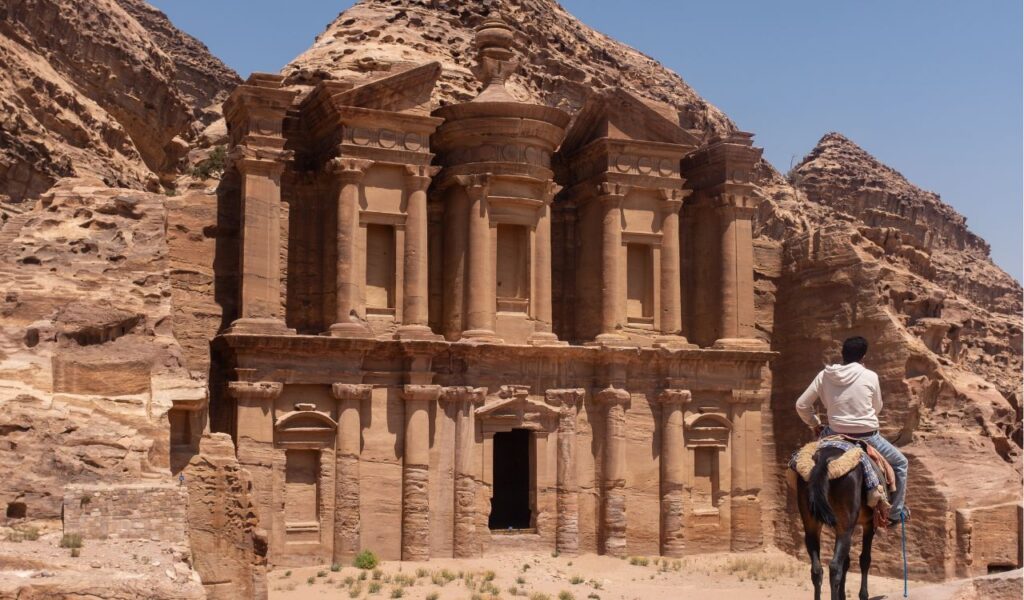
Across deserts, ravines, and river cliffs, entire worlds have been shaped from living stone. These places feel imagined yet remain vividly real, blending faith, defense, art, and daily life. This journey begins with legendary cities, moves through sacred districts and lived cave quarters, and ends among cliffside communities that echo with quiet resilience. The result is a survey of carved urban fabrics that look ready for myth yet stand firmly in history.
Petra, Jordan
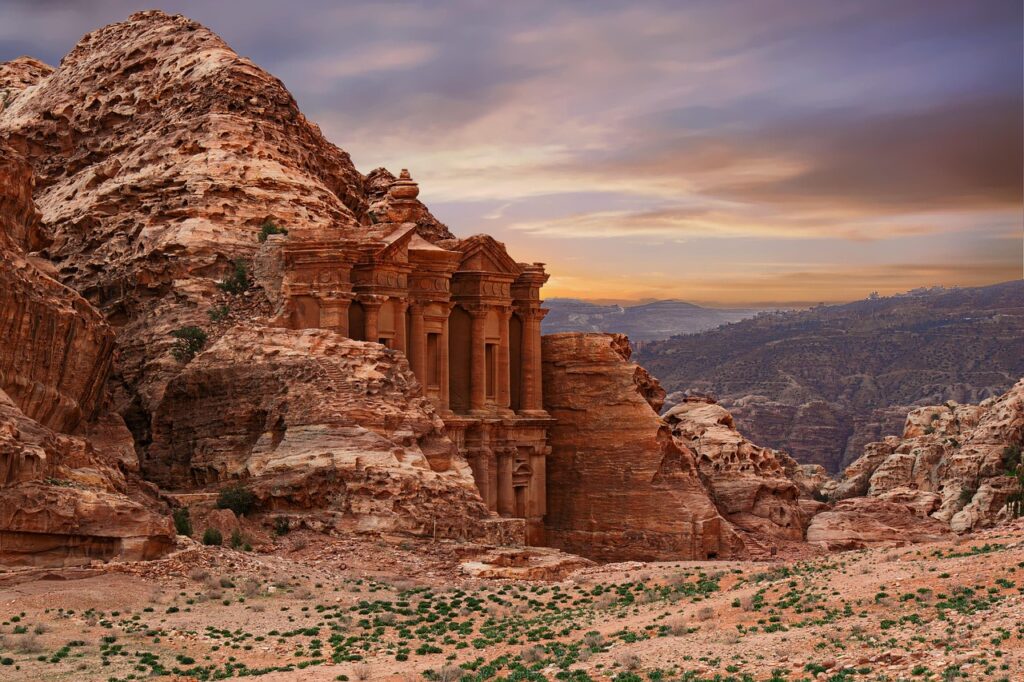
Hidden within a narrow canyon, Petra reveals itself as the path opens to the Treasury’s ornate face. The rose-red stone glows at sunrise and dusk, turning columns and cornices into living fire. Beyond the first spectacle lies a network of tombs, streets, and temples set into cliffs. Half-carved and half-built, the city expands into a landscape of facades and terraces. Climb to the Monastery and feel guided from shadow to sudden wonder by stone itself.
Hegra, Saudi Arabia
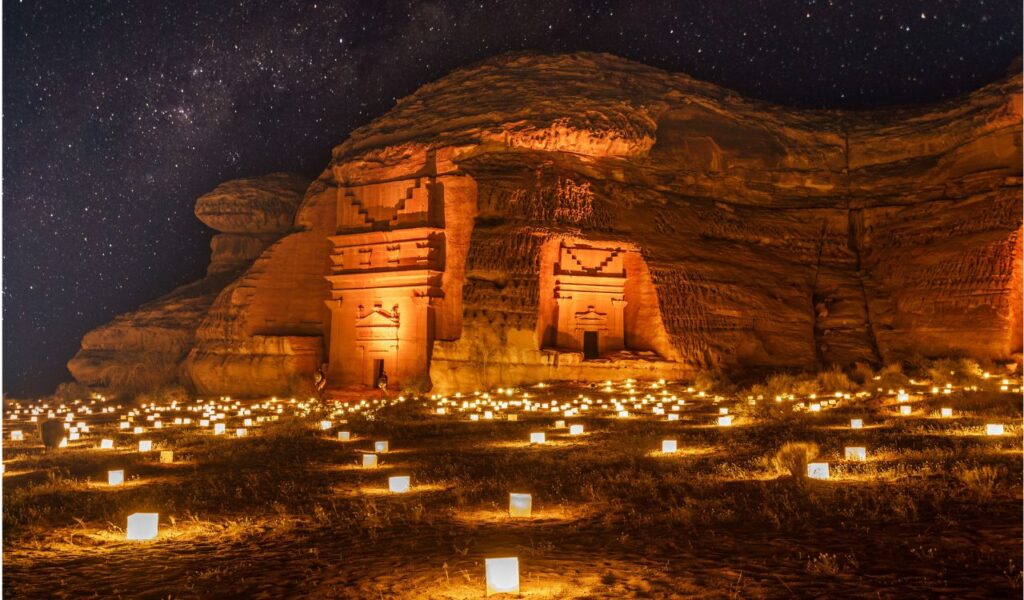
In the Hejazi desert, Hegra rises from golden outcrops with around 131 monumental rock-cut tombs. The crisp Nabataean facades carry pediments, pilasters, and doorframes etched with sharp precision. The place once watched over caravan routes, yet today its broad silence lets details speak. Sand gathers at thresholds like a record of travel. A companion to Petra in spirit, its open horizons add calm, contemplation, and a haunting sense of distance.
Sassi di Matera, Italy
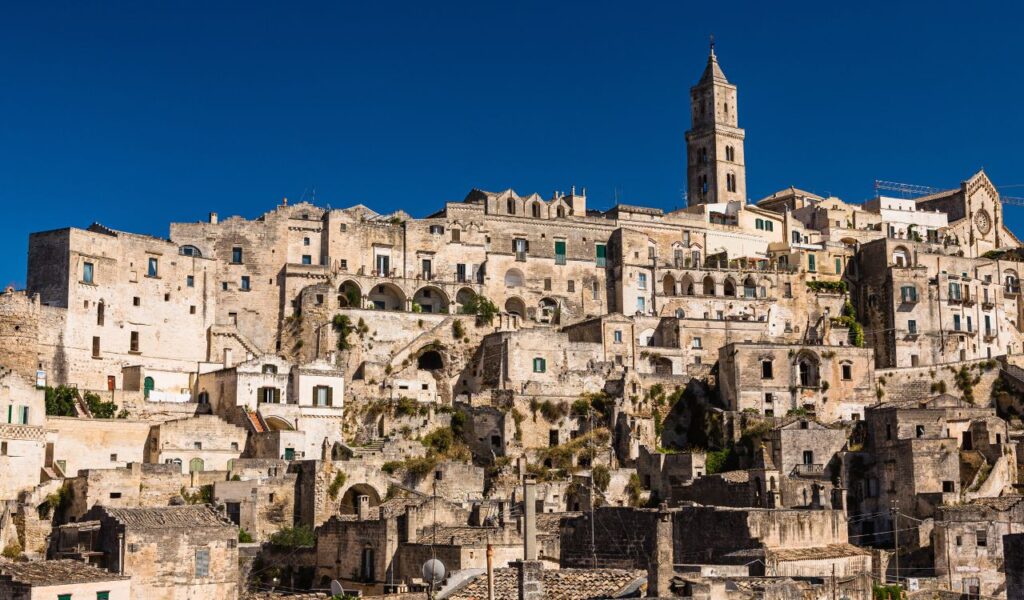
Matera’s Sassi districts flow down ravines where houses become extensions of bedrock. Caves open into rooms, benches are carved from walls, and chapels hide behind simple doors. Sunlight washes the pale stone and rings church towers with warm light. Streets twist into stairways, then spill onto terraces with views across the gorge. Recognized as a rare troglodyte urban ensemble, it is a lived city where geology set the plan and people adapted with grace.
Cappadocia Cave Towns, Turkey
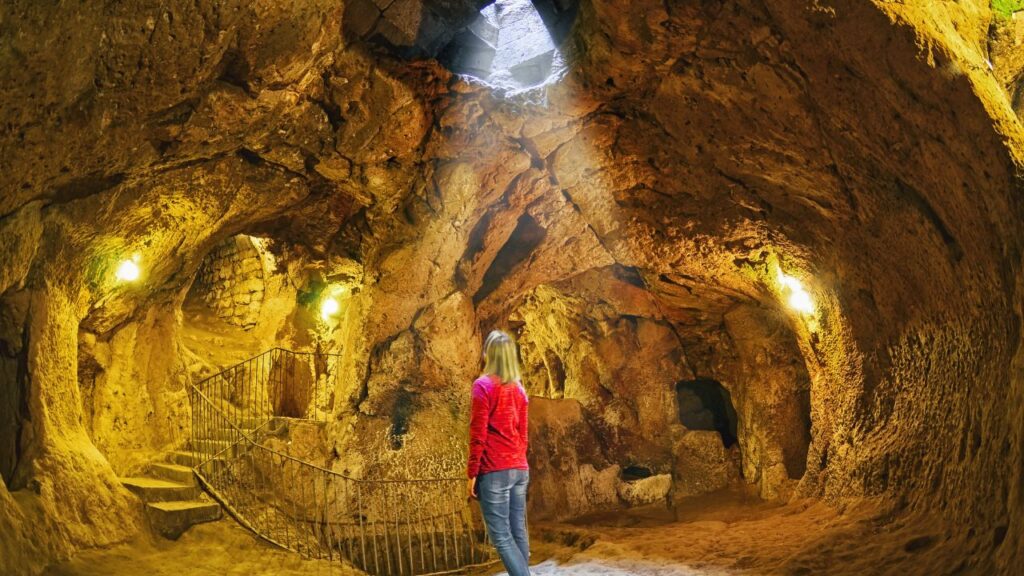
Cappadocia balances life above and below ground. Fairy chimneys hold homes and chapels with painted walls. Under the valleys, underground cities such as Derinkuyu and Kaymakli descend level by level. Passages breathe through vents, and round stone doors once sealed halls. The soft tuff invites carving, so the terrain reads like patient work by hands and weather. Villages, shelters, and sanctuaries interlock into a realm made for refuge and story.
Vardzia, Georgia
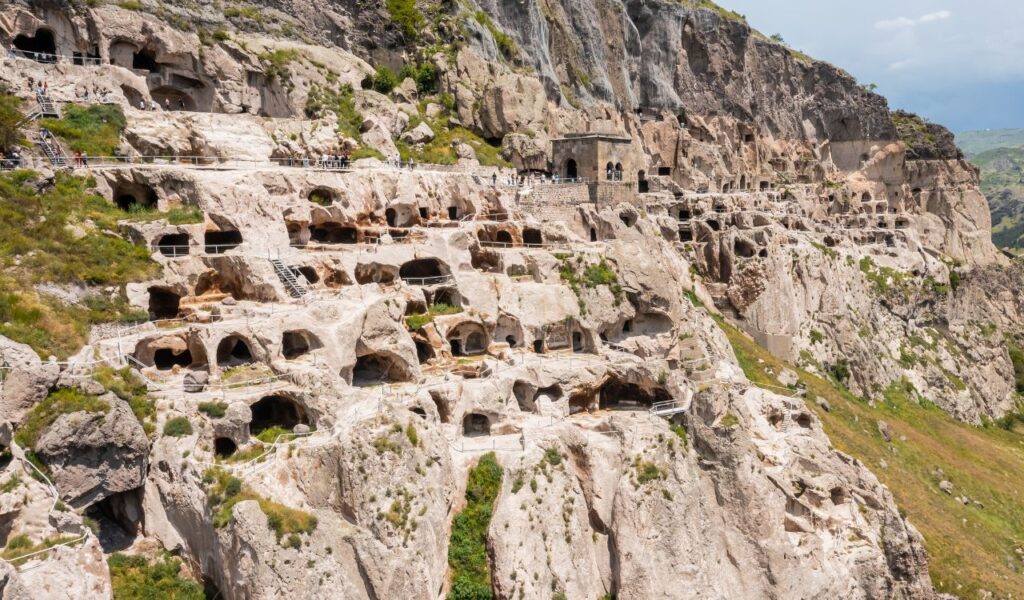
Vardzia grips a cliff above a river, its rooms and chapels linked by tunnels and steps. The complex stretches along the face like a stone hive, with terraces catching light and shadow in slow shifts. Once a stronghold and monastery, it combines the protective stance of a fortress with the rhythm of prayer. From within, the rock frames the valley in narrow views, turning each window into a measured moment and the cliff into a living wall.
Lalibela, Ethiopia
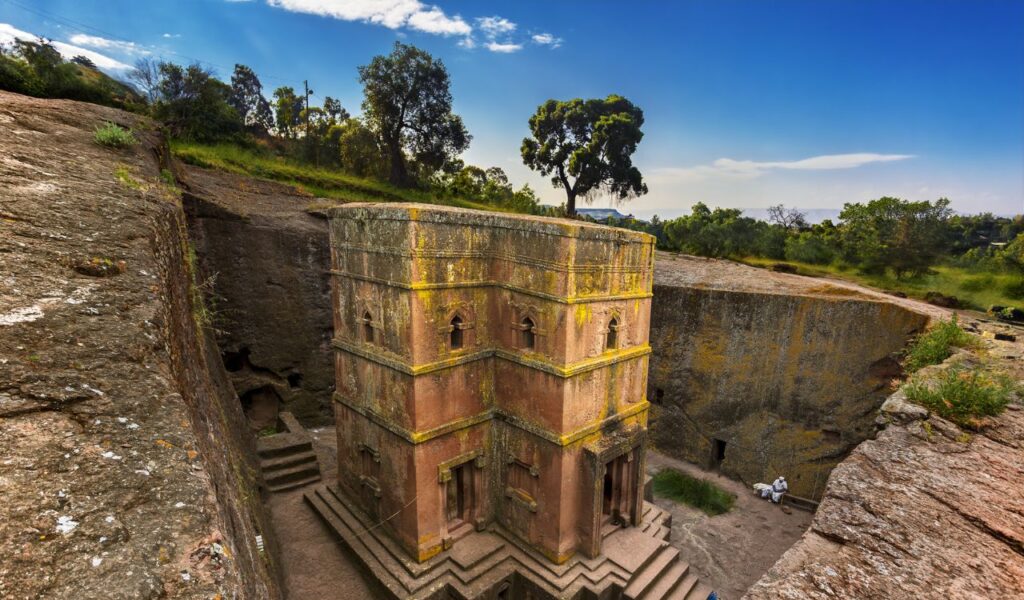
Lalibela’s churches were carved down into the earth, forming courtyards and trench-like passages that feel like streets. Each sanctuary appears revealed rather than built, with windows, doors, and columns shaped from living tuff. Pilgrims move along worn paths that connect the site into a walkable sacred town. The quiet requires no announcement. Stone and devotion share the same texture, and the city seems to rise from faith as naturally as from ground.
Ellora, India

Ellora carves an immense sacred district into basalt, uniting Hindu, Buddhist, and Jain monuments. Kailasa stands at the center like a temple set free from its mountain by careful subtraction. Halls and pillars emerge from one mass, turning rock into space and narrative. The complex reads like a city of ideas where different traditions meet through craft and scale. Architectural confidence is visible in each cornice, relief, and precisely cleared court.\
Ajanta, India
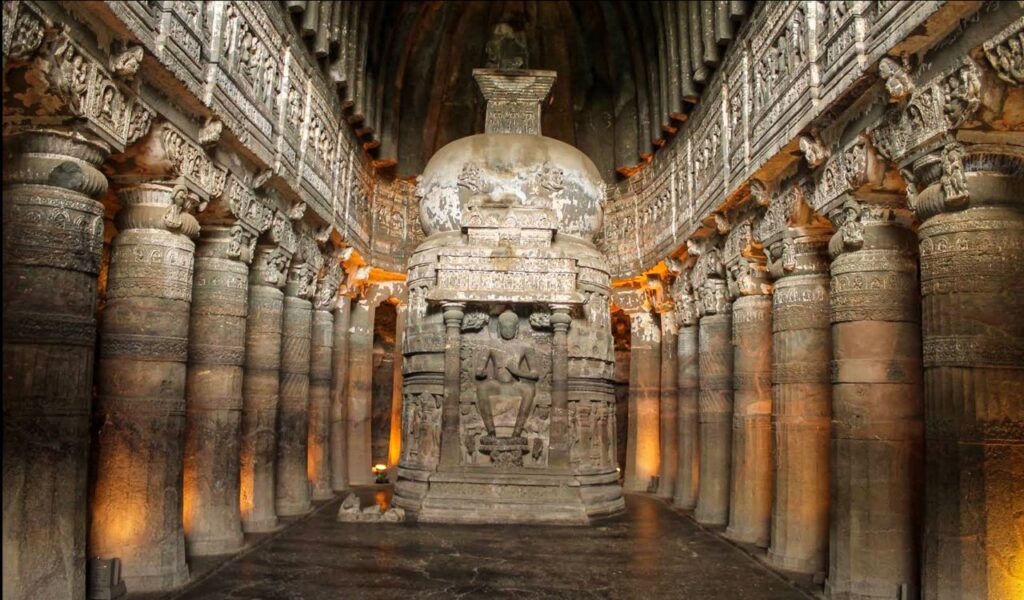
Ajanta bends around a gorge in a long arc of caves that formed a monastic campus. Chaitya halls echo with calm, while viharas hold cells and columns. Painted walls preserve scenes that still feel warm with human presence. The river below sets a soft soundtrack under the rock, so the ensemble breathes like a single room with many doors. It feels secluded yet complete, a place shaped for learning, reflection, and the steady light of practice.
Longmen Grottoes, China
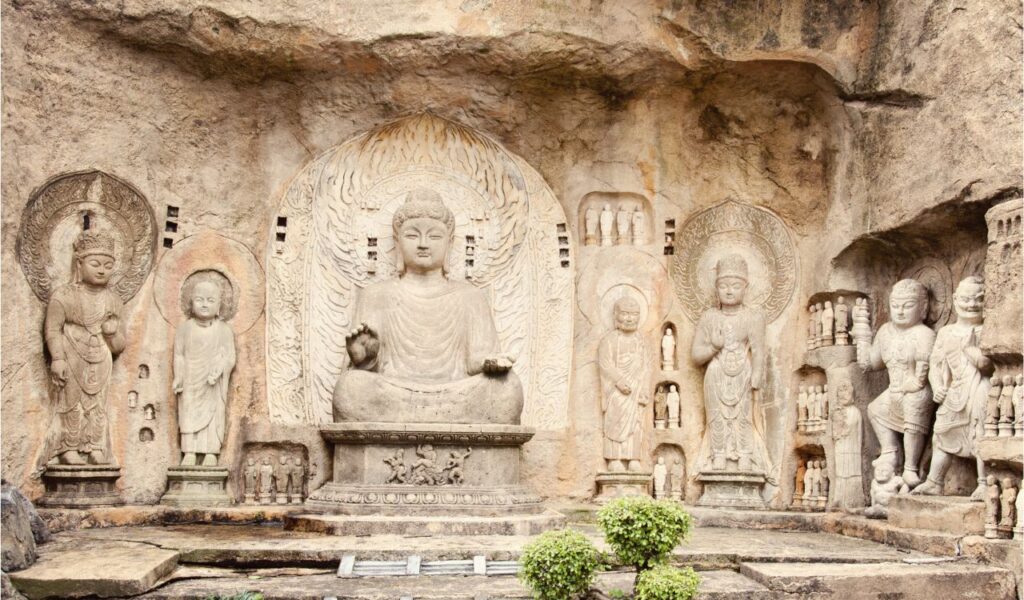
Longmen stretches along the Yi River in a sequence of cliffside shrines. Thousands of niches and carvings form a sculptural city where paths act as streets and caves become halls. Faces emerge from stone at different scales, from fingertip details to towering figures. The repetition becomes a pulse. As light shifts, the cliffs seem to speak in small shadows and bright lines. The precinct feels vast yet precise, patient and profoundly deliberate.
Mesa Verde, USA

In sandstone alcoves, the Ancestral Puebloans built multiroom dwellings with kivas and plazas that knit communities into the cliff. Ladders and ledges connect homes in a practical choreography of daily life. The rock shelters rooms from heat and cold, and the masonry answers the curves of stone. Seen across the canyon, settlements appear suspended between earth and air. The hush feels full rather than empty, alive with presence and memory.